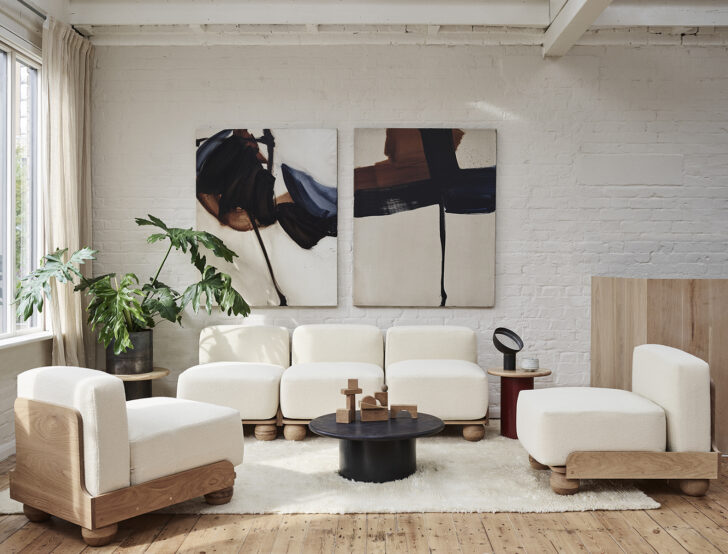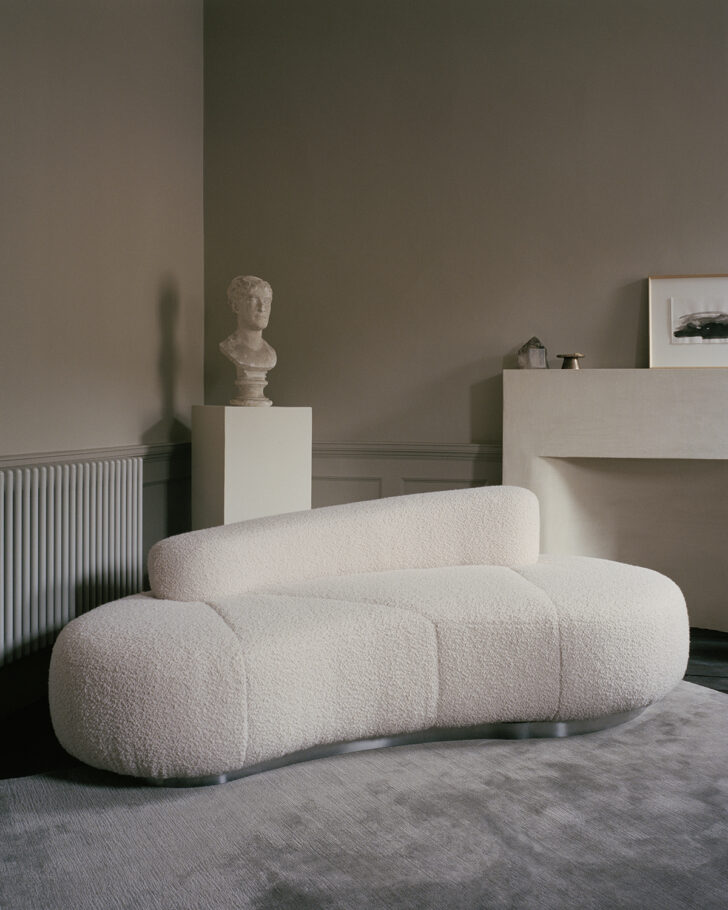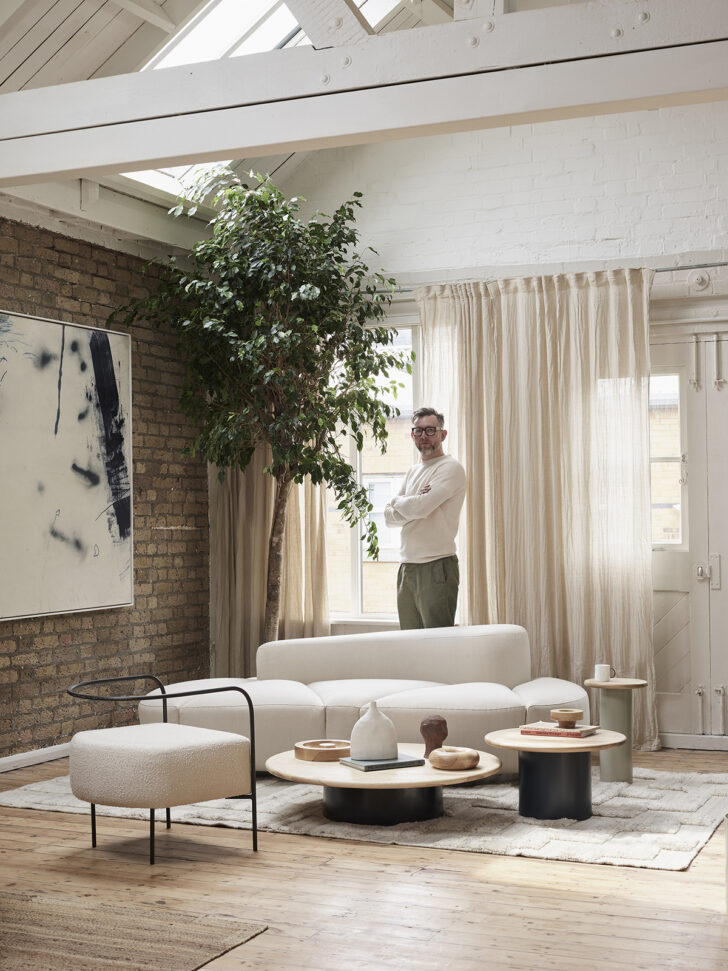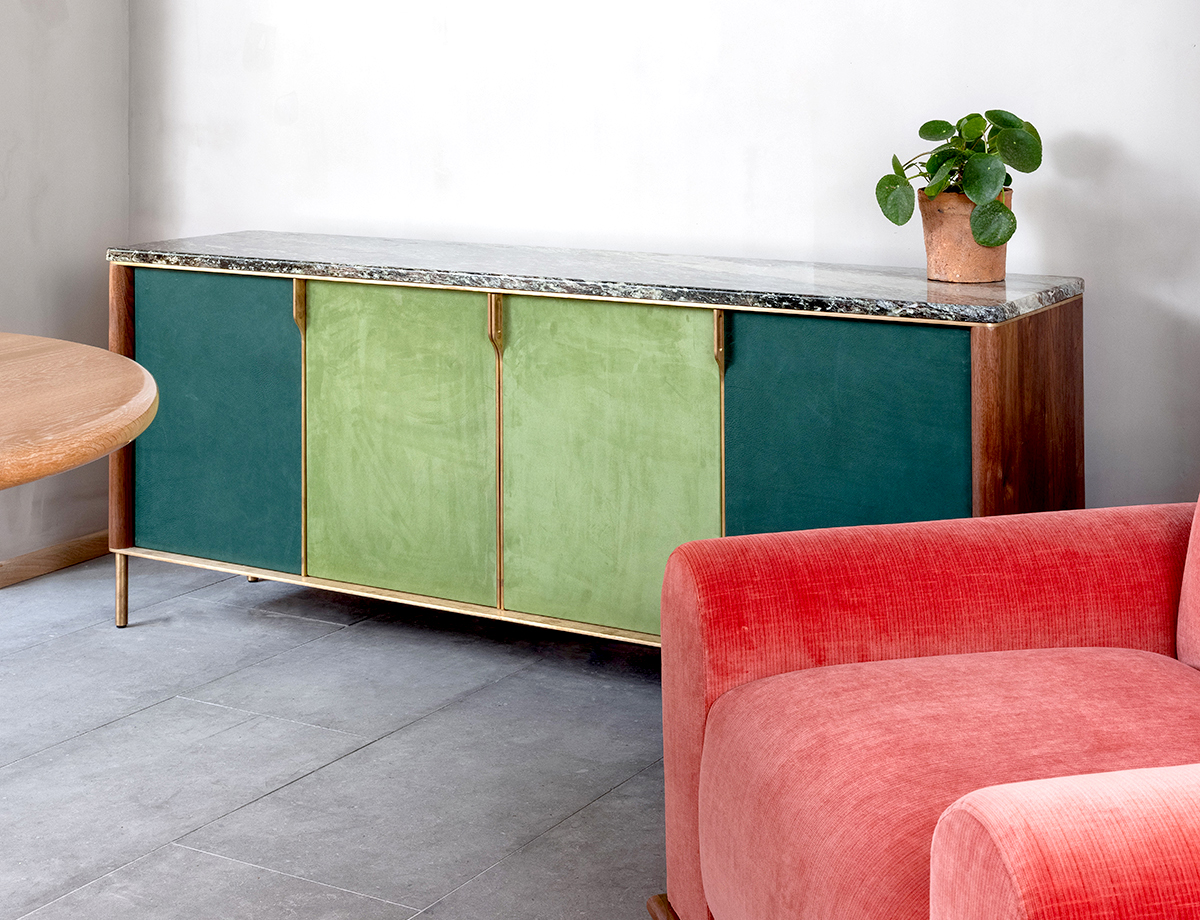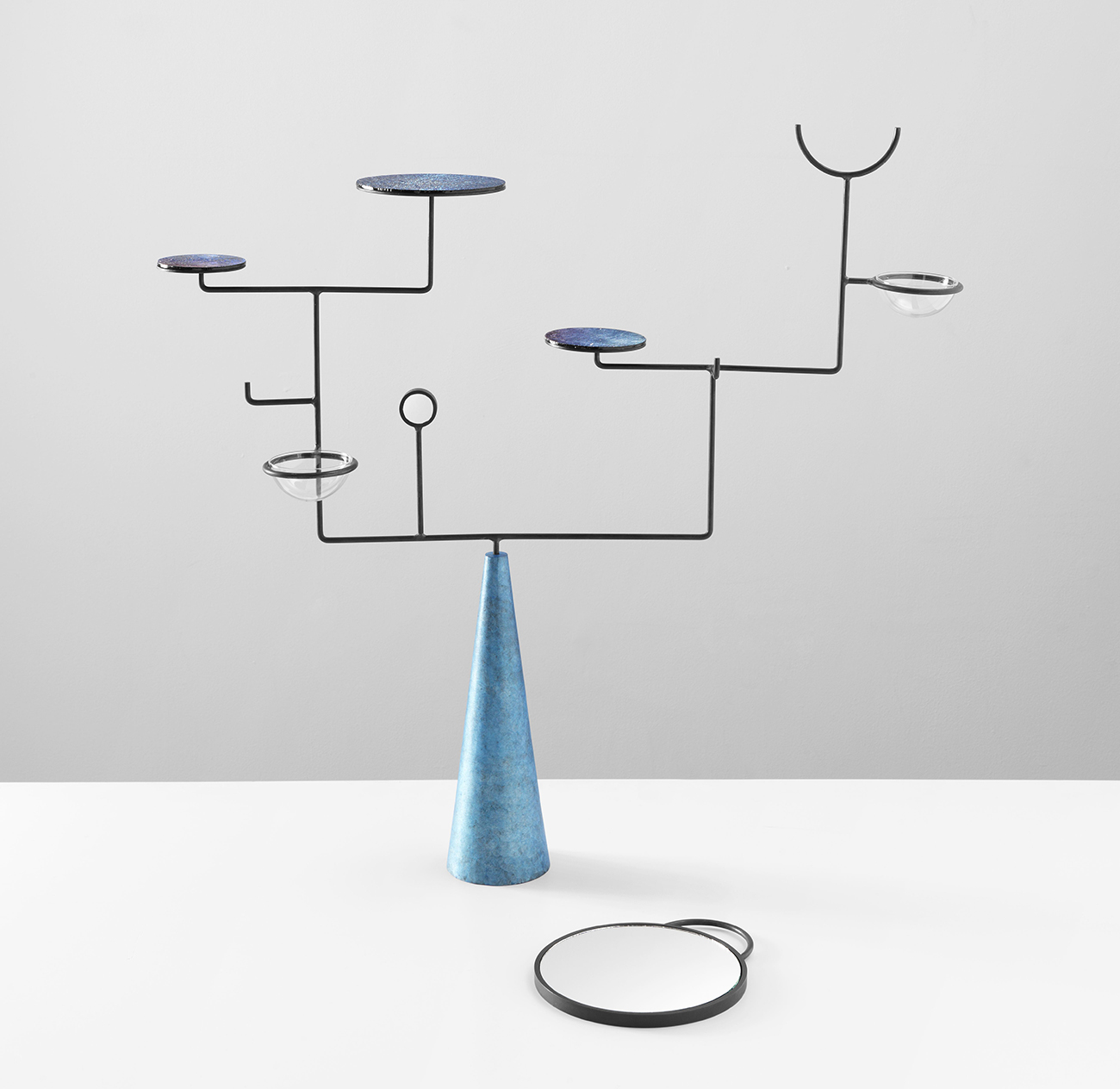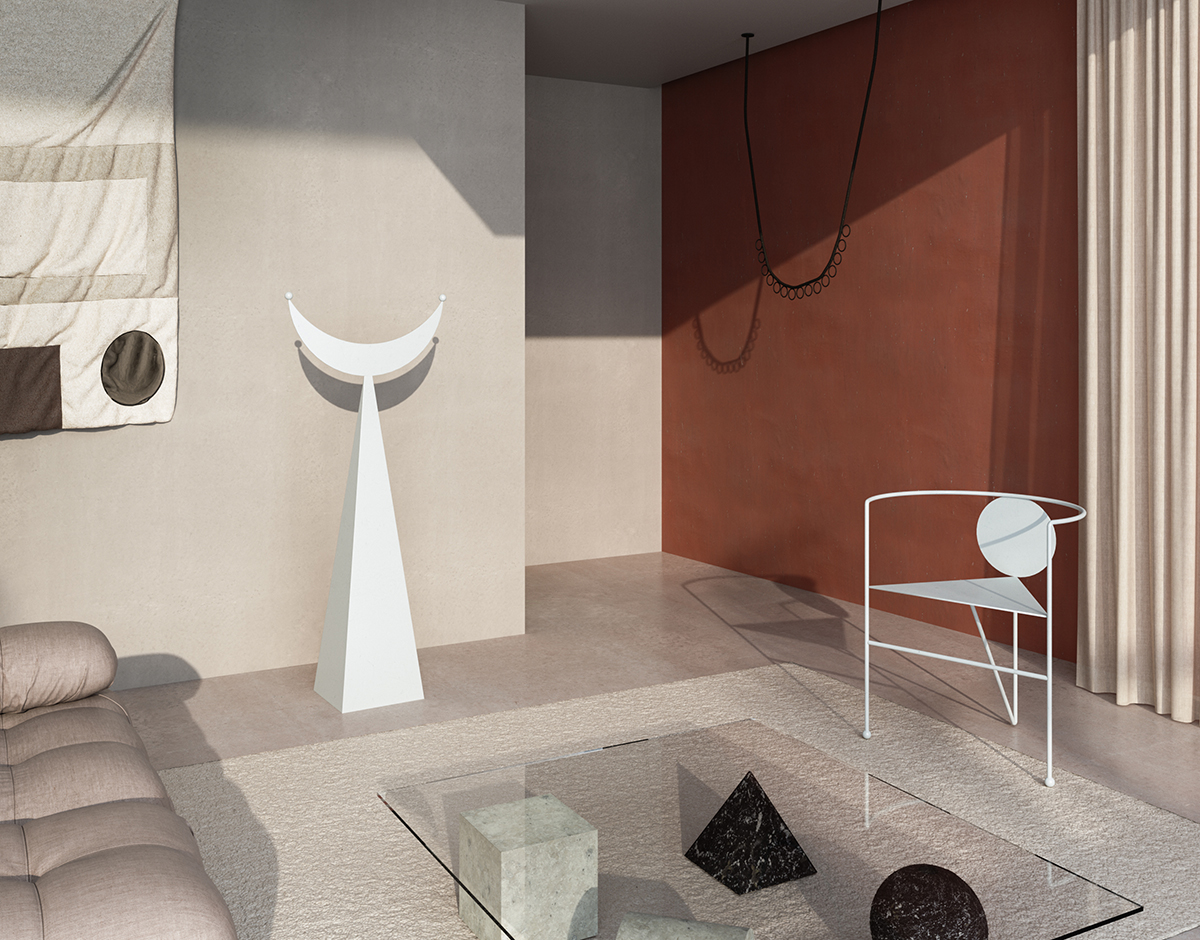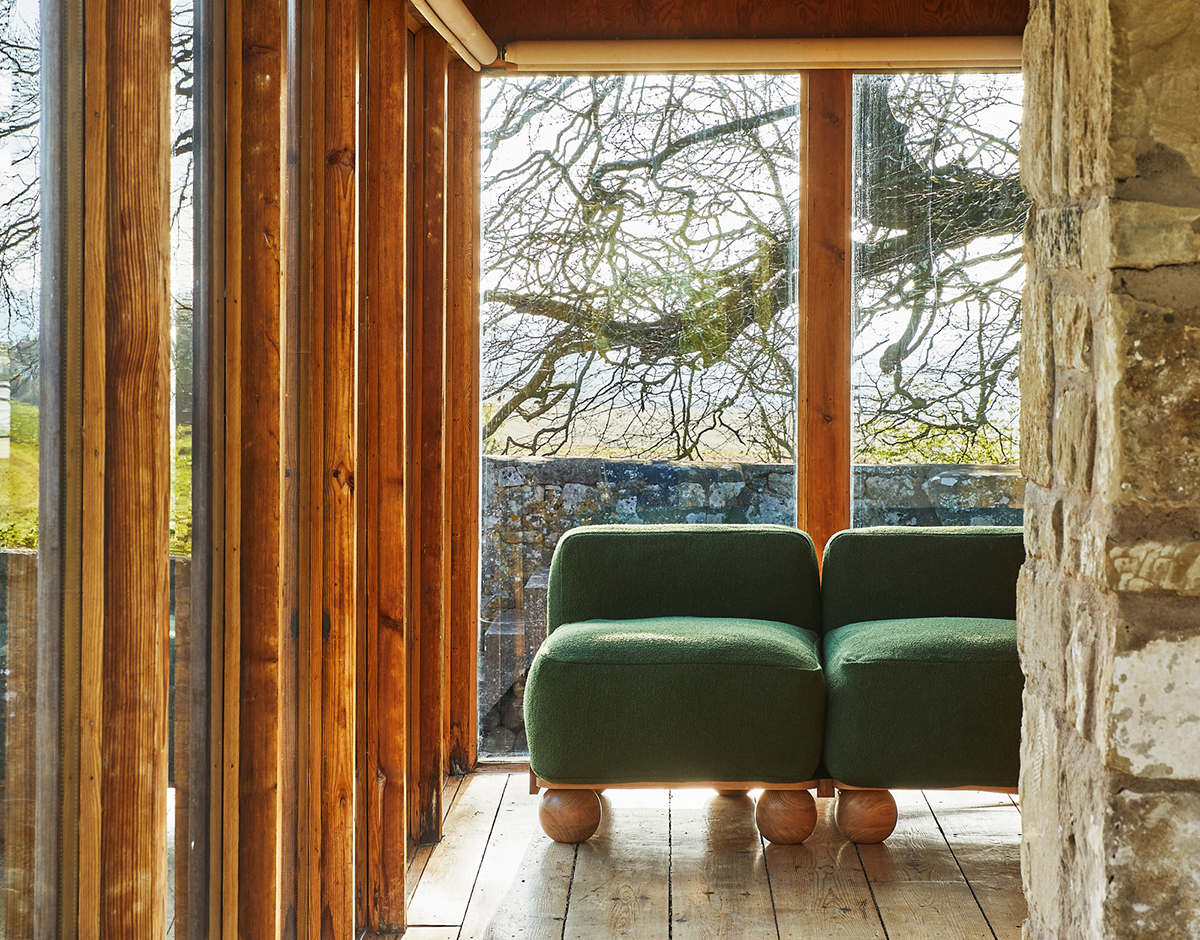
10.07.22
Q+A
Fred Rigby Draws Upon the English Landscape for His New Furniture and Homewares
In Fred Rigby’s mind, clouds can be sofas, raindrops in a puddle become a collection of coffee and side tables, and pylon conductors translate into stackable bowls. Growing up in the English countryside, with not much to do but play in the fields and make things in the garage, the London-based designer now draws inspiration from the natural world, and the industrial objects set within it, to create furniture and homeware that’s honest, tactile, and intended to have conversations with its users.
Rigby’s design language of soft, friendly shapes and raw materials is best demonstrated in his Everyday Collection, which was released last year and includes pieces like the Cove sofa, designed like an arthropod to have a hard oak shell on the outside, and soft cushions within (not to mention it sits atop some seriously hefty ball feet, one of our favorite design elements). His Raindrops tables are available in six different sizes, with five different tops and nine different base options, so that people can fully customize them to fit their homes.
Rigby recently opened a showroom within his studio in London Fields, where customers can come and see, touch and try out his work within a home-like setting. This domestic display style required homeware, but rather than buying from elsewhere, his team decided to design and produce their own, which launched to coincide with last month’s London Design Festival. The collection includes table mirrors modeled on the giant disks that formed an early radar system along England’s south coast, plus powder-coated steel vases, bowls, and lamps, all based on the industrial gas and water towers that are found dotting the British landscape. The series also features stackable, solid-oak bowls and plates based on ceramic insulators found on electricity pylons.
Ahead of LDF, we chatted to Rigby about his journey from interiors to furniture, referring to designed objects as if they’re people, and why he’ll never start a project on a computer.
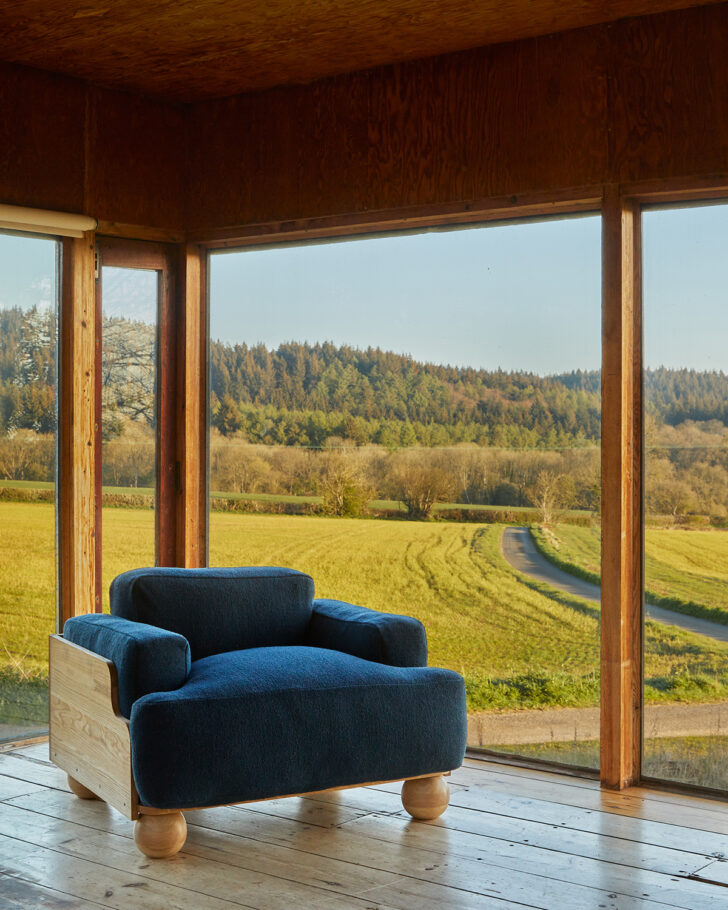
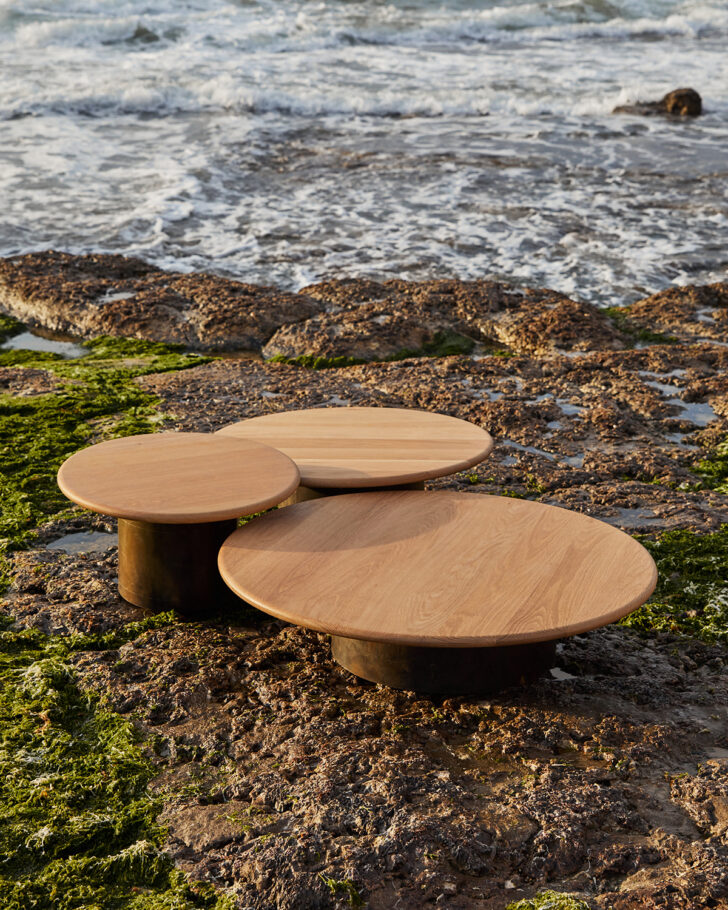
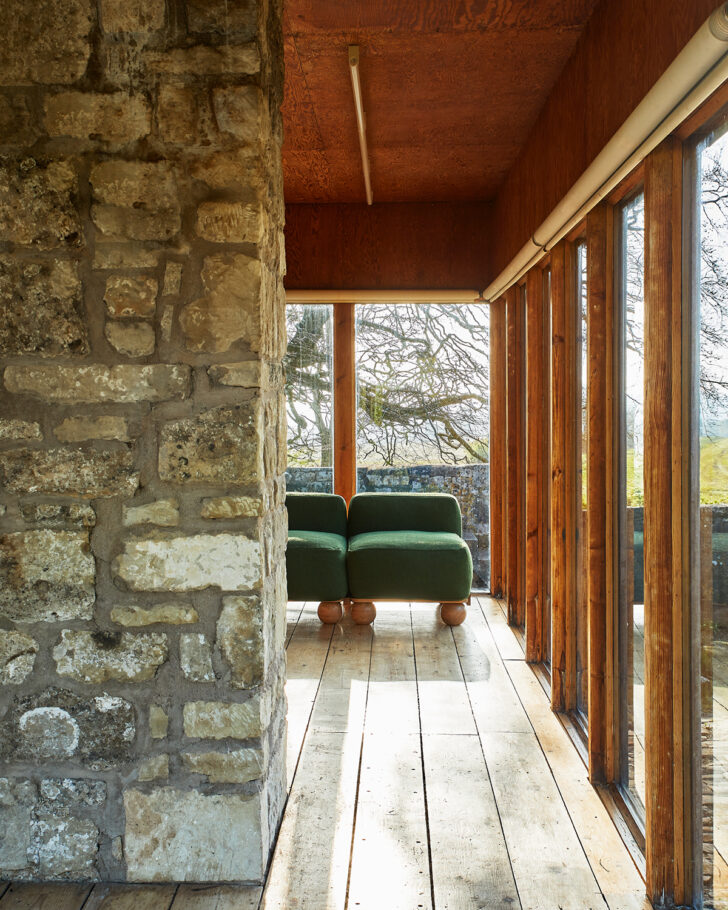
Hi, Fred. Let’s start by talking about how even you ended up doing what you’re doing!
Start from the beginning, right? I grew up in the countryside on the south coast of England. It was very much an outdoors childhood; we were more often than not playing in fields or with cars, in the garage building stuff. It was very hands-on, and I think that’s where I developed a love of making things. Then I discovered that you could actually do this at university, so I did a year-long foundation course at Kingston University in southwest London, and that led to a degree in furniture design.
After graduating, I worked for a few different artists and designers and then set out on my own. I actually started by doing a lot of music video art direction, which is a very creative world because usually you have to work out how to do things with no time and no money.
I very randomly got asked to design the interior for a lovely menswear store in Shoreditch. This is going to make me sound old, but this was right at the beginning of Instagram, when everything in London was very word of mouth. So I designed that store and then someone asked me to design their store, and then their next door neighbor asked me to design their store. I was led around London designing stores.
Why do you find store design so interesting?
I relish that you get a blank floor plan, and you just have to imagine. Firstly, there’s the brief, which involves working out the brand and the way they want to put the product in there — whether they need rails for clothes, or shelving for shoes, or whatever the brand sells. Then you work out how you’re going to fit it all in, and the customers’ journey, and the materials palette, and that’s really exciting.
From shop interiors, I ended up doing restaurants and hotels and all sorts of projects, and they kind of turned out to be like physical calling cards. People would walk into a store and, hopefully, they would say, “Oh, I love the interior. Who designed it?” And that led into designing furniture for people’s homes, bespoke pieces, and then that led into doing residential interiors. That’s when I realized that it’d be good to have a product line out there, which people could buy directly, because the process of creating bespoke pieces takes a lot of studio time, and those projects would be quite expensive. That’s how we created the Everyday Collection, which was last year.
Tell me a little more about that collection.
I wanted a sofa that was just really honest. With a lot of sofas, everything is wrapped in fabric, and the structure is hidden away. Whereas with Cove, I wanted it to be like an arthropod, with a hard oak shell on the outside and the softness on the inside being the cushions. The honesty comes from being able to see the structure, which creates this minimalism and this simplicity. It also comes down to the material usage.
We also did a collection of coffee and side tables called Raindrops, which was inspired by rain dropping into a puddle. Each one is a different size, which is really practical for people’s homes. We’ve released them in every possible color that we think would work within a home together. There’s five different tops, nine different bases and six different sizes. So if you’re into wood, you could have a wooden top for your home, but if you prefer a concrete finish, we do that as well. It’s about giving people the flexibility and the opportunity to create a bespoke piece for their home. Everyone wants to display their character, whether it’s through their clothes or through their homes and their furniture. And if you’re able to give them that flexibility and adaptability, then it allows people to do so.
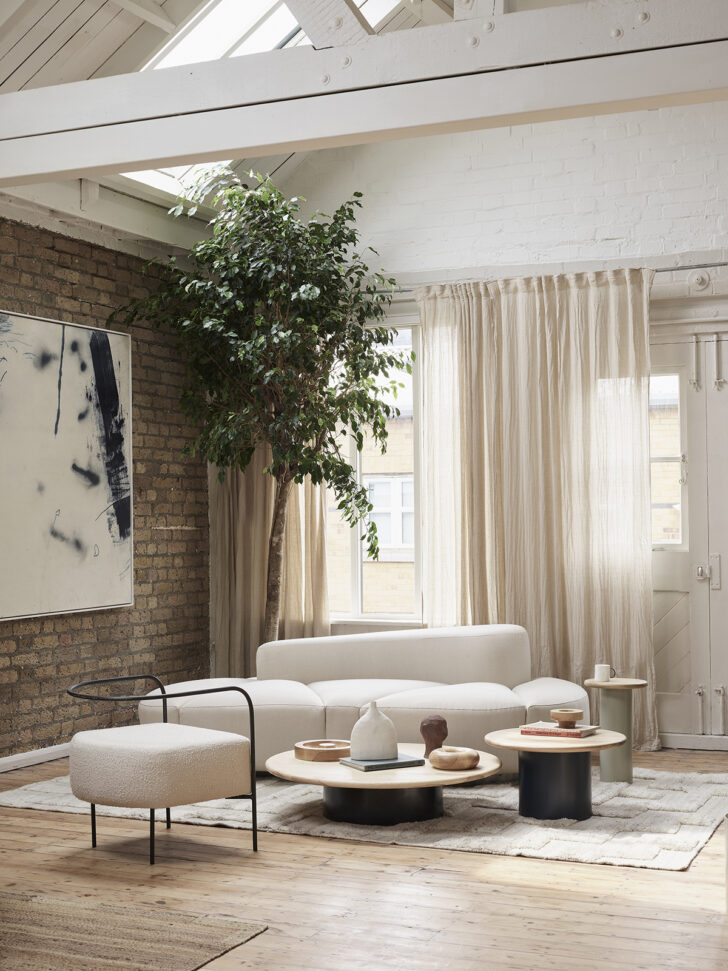
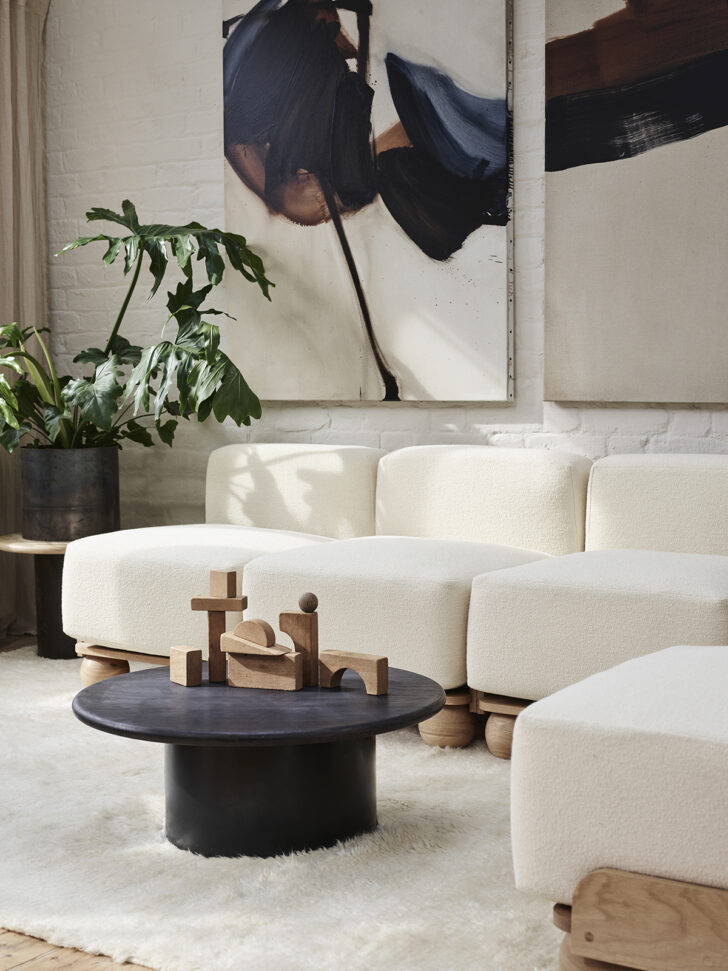
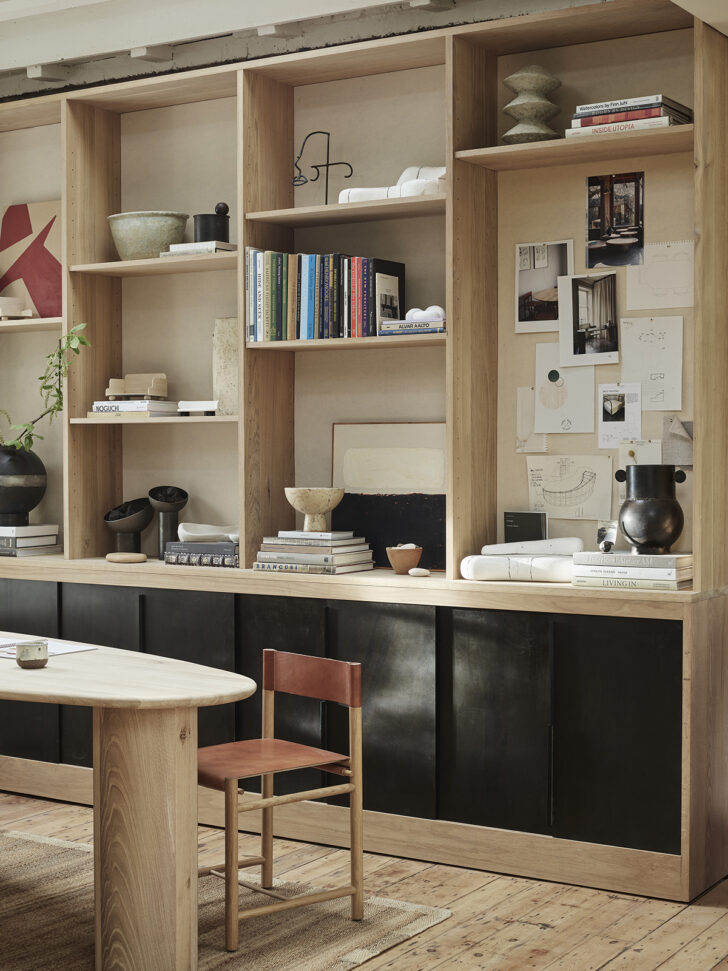
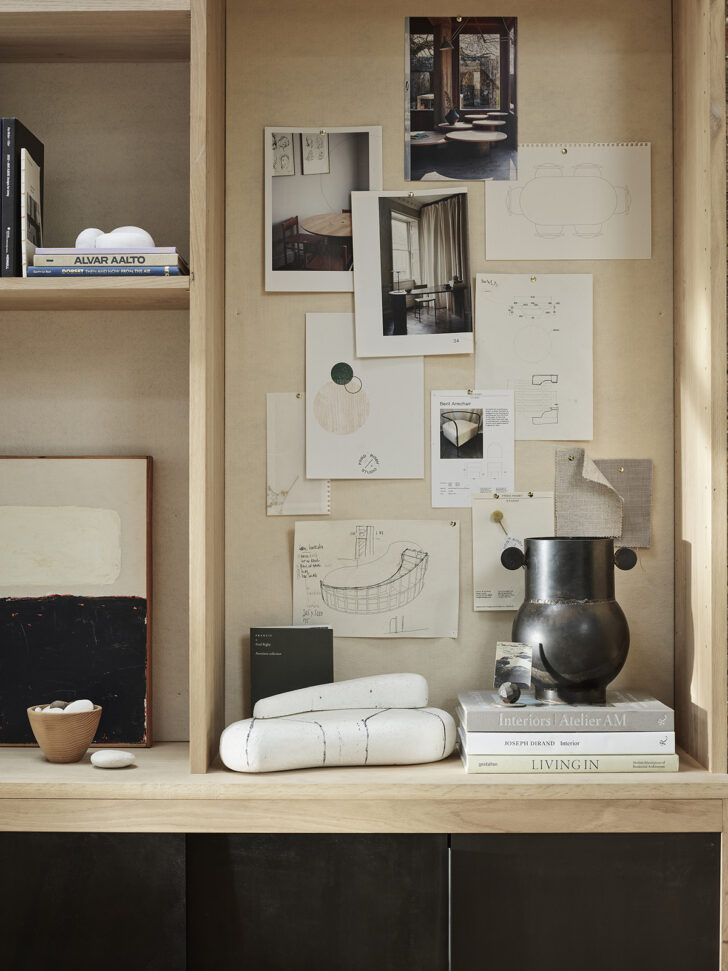
What is your studio space like?
We were making and designing from a small space in Stoke Newington, northeast London. Fortunately, we outgrew the space, and even more fortunately, I was offered by a friend who was moving out with a beautiful building in London Fields to take their space. It’s a standalone, old Victorian building. A lot of the old buildings in the area have been decimated to create new buildings or high-rises for residential use. So I jumped at the opportunity to take the building.
The ground floor is dedicated to our design studio and our workshops. We make each product to order and then ship them, often to New York, or Los Angeles, all over the world which is amazing to be able to do. And for the first time, we were able to create a showroom space that displays our collections and bespoke pieces, in the style that I like. I wanted a showroom that felt like a home, so people could walk into the space, and see and touch and feel the furniture, in a homely setting. There’s lots of books dotted around.
The showroom has a few different purposes. We can invite people in who want to see the collections, and test a sofa or a coffee table before they buy them. We still do interiors, whether it’s residential or retail, so we take quite a few client appointments upstairs. We haven’t got any computers upstairs, just pens and paper, so we’re sketching and creating. I understand that the internet is a wonderful tool, but I think having a blank piece of paper and a pen has got to be your starting point. I love sketching with our clients and developing pieces that way.
What is it about hand-drawing that helps to spark your creativity?
With a pen, you can create lines that you can’t create on a computer. With our furniture, it’s very organic in shape, and it feels like you can only create those lines with a pen, or a saw, like a jigsaw. Starting with sketching, for me, seems the only way to begin the process. If you start by looking at a computer, you can more easily create straight lines and circles. You can obviously create curves too, but it’s very regimented and I find it quite frustrating that you can’t draw the lines in your head.
How has having a showroom changed your business?
It’s been a completely different move. We’ve never had a public facing side to our business before, and it’s been so nice to get guests through and to see people interact with the furniture. It has also encouraged us to design through necessity. We needed some cutlery and plates and bowls for the showroom, so we designed some, and that has led us into creating a homeware collection.
When you’re creating your own brief, it’s like a design playground. Because suddenly we think, we’re not going to buy plates, we could just make plates. Why would we buy cutlery? That’s how you create and fill a catalog. That’s how Conran or whoever was able to create an aesthetic for the home.
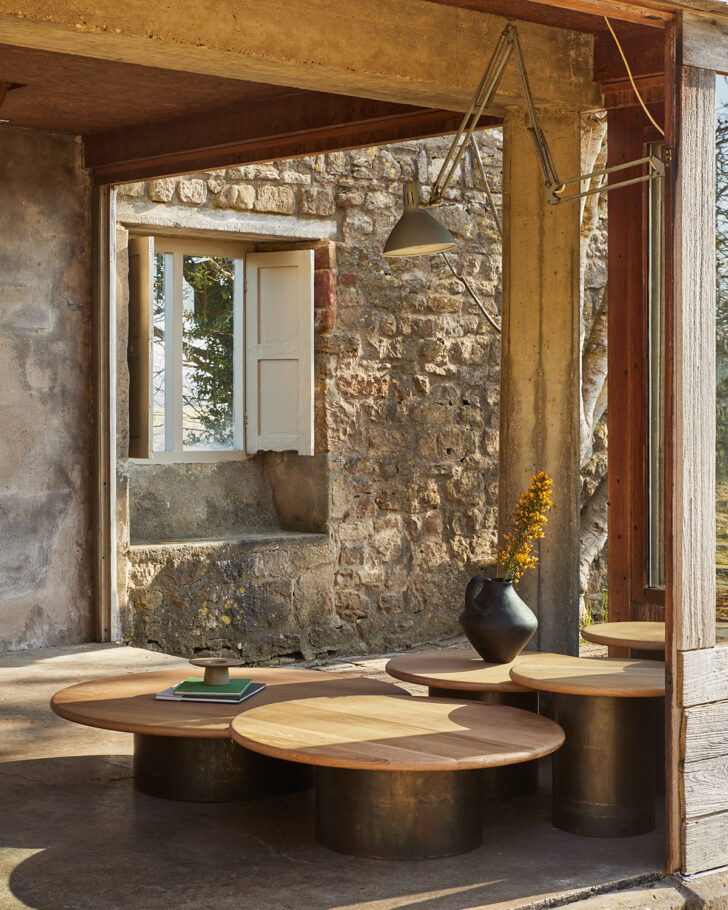
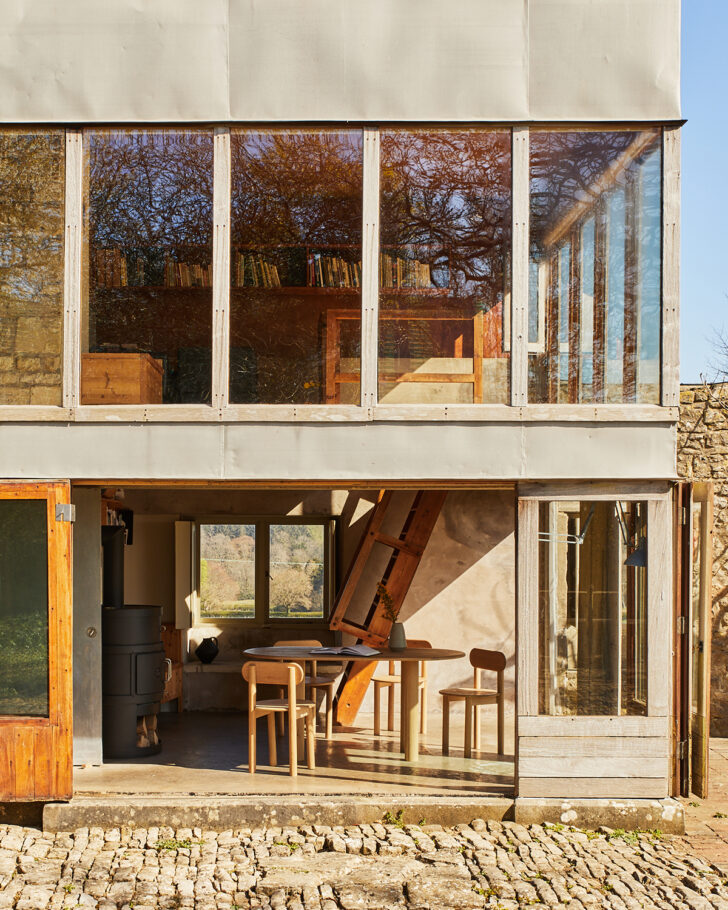
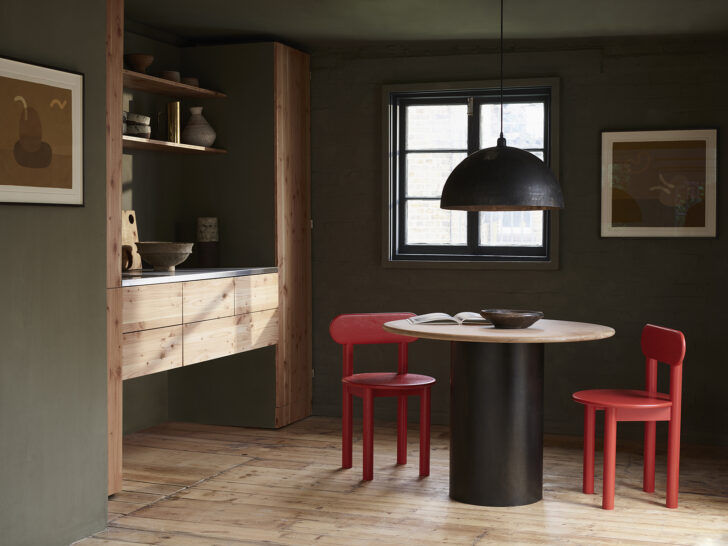
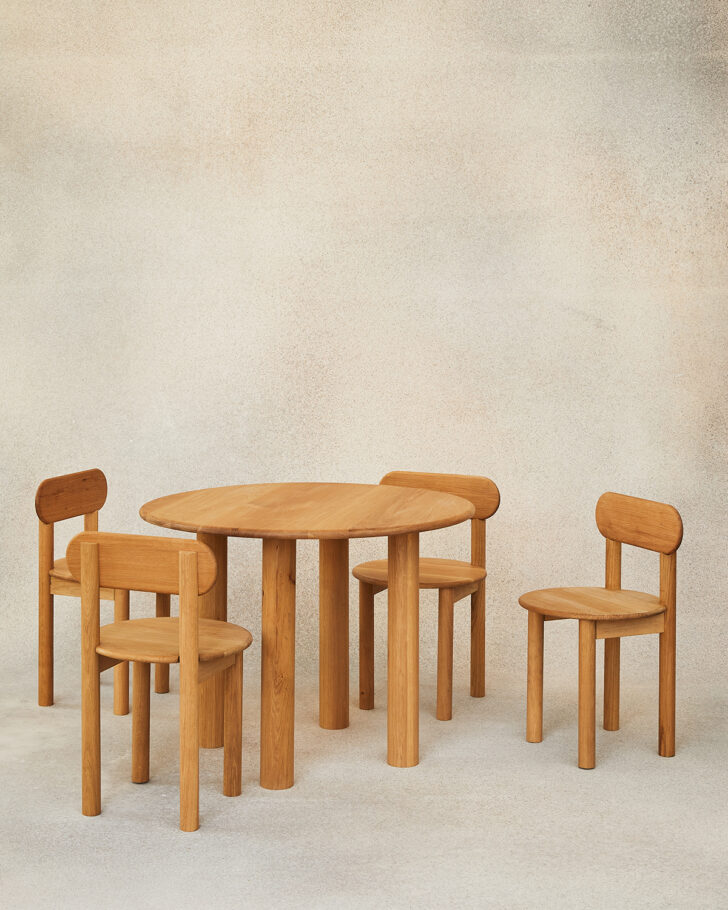
And how would you describe your own aesthetic?
I like the idea that our work is playful, unique, handmade, shaped. There’s a playfulness in creating pieces that are unique, inherently, and because of their shapely nature. I find that when you walk into a space with a rectangular table stuck in the middle, that almost creates borders, or a room within a room that’s not really aggressive, but it’s sharp. Whereas with the more shapely tables that we create, there’s a tactility to them. So I guess tactile, playful and hand crafted, although I don’t really like the word “crafted”.
What I wrote down in my notes was “friendly minimalism.”
I like that you said “friendly.” There’s a warmth and a calmness. They’re almost conversational without trying too hard. They’re comfortable objects in the room that can talk if they want to talk but they can also sit back — I’m talking about them like they’re people — but they can also sit in the corner and just have a nice time.
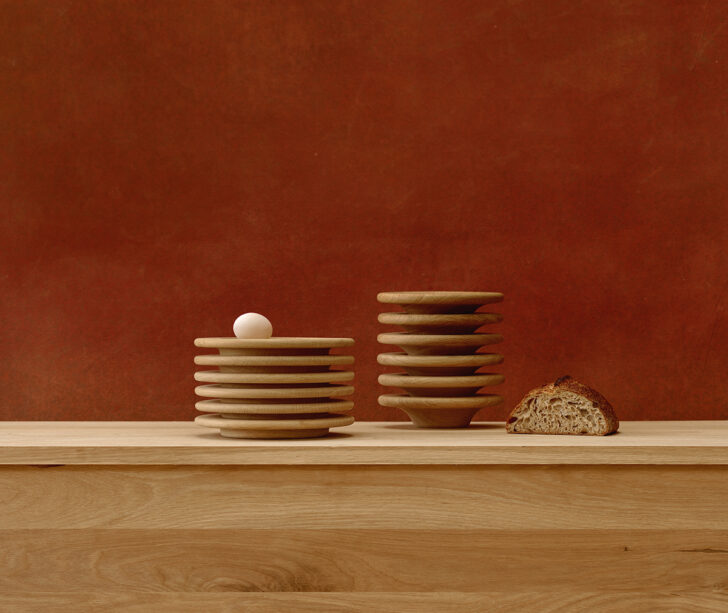
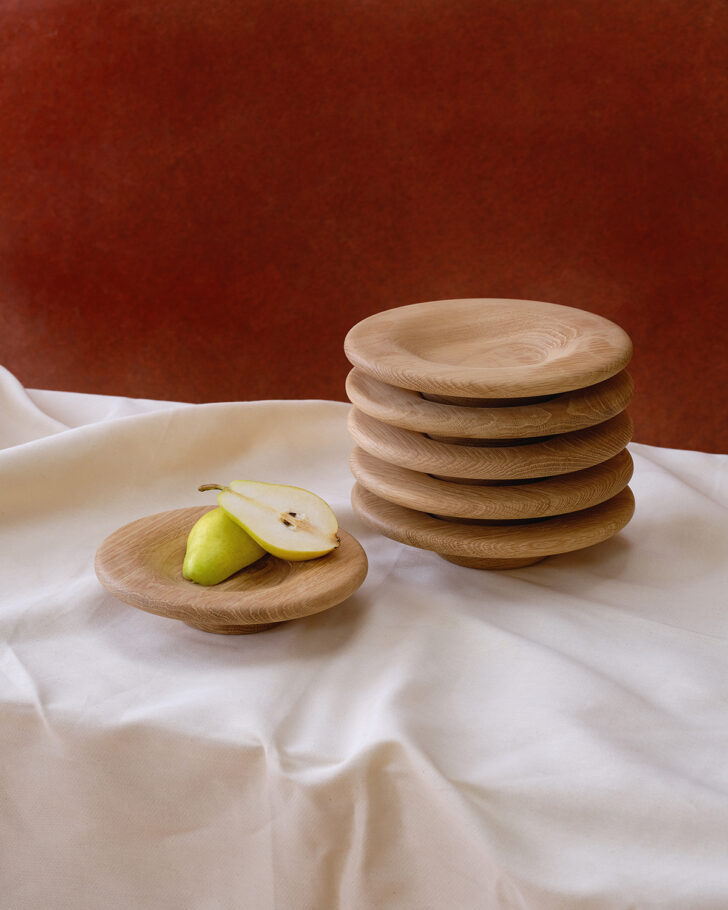
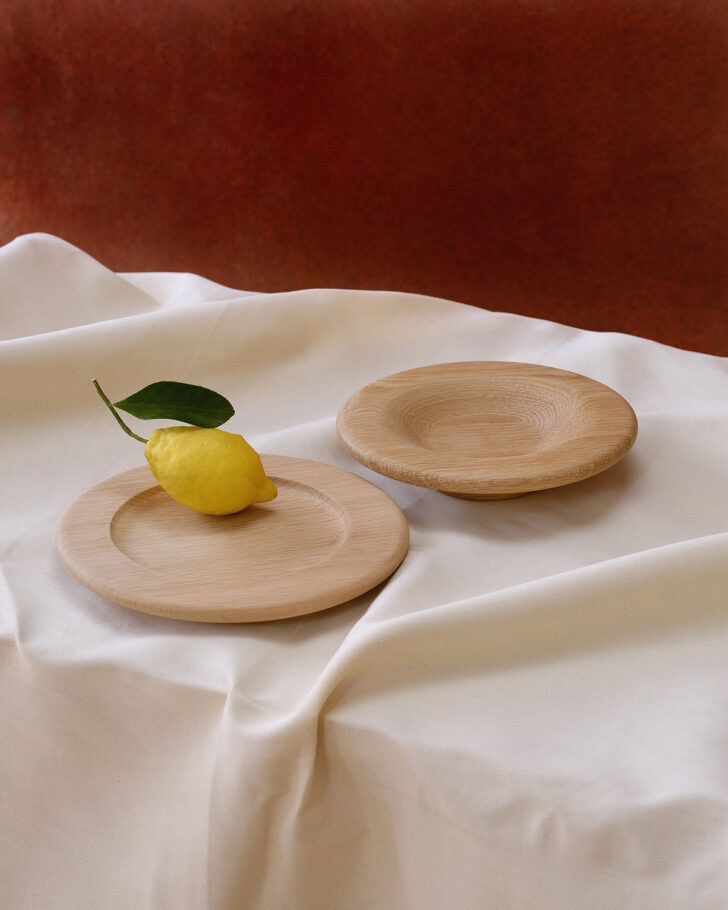
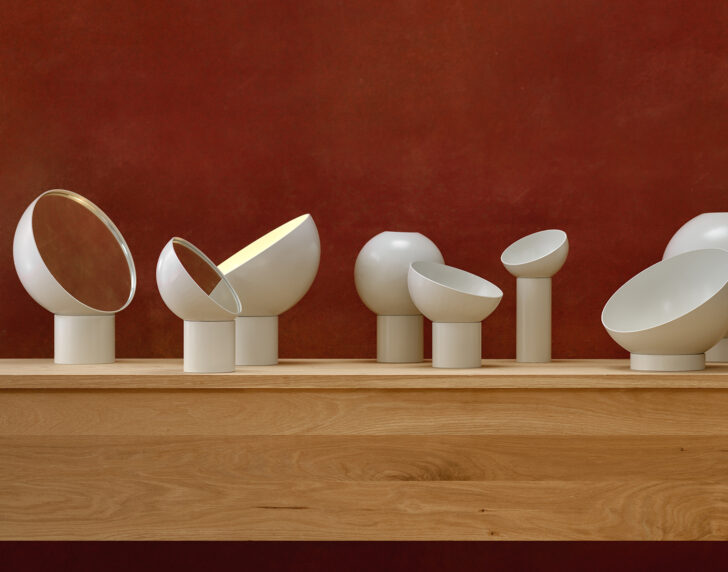
A lot of designers describe their products as characters that have personalities, and different ways of speaking to people, and to one another.
The thing with furniture is that it’s used. We have so many different types of customers, who are intrigued by the designs, who are drawn to the simplistic shapes for their home, or they like the colors, or whatever it is. We aim to create pieces that can work within any space. And I think that comes from doing interiors. You get to see and create lots of different spaces. From the retail side, we work with so many different brands and each has a different way of imagining how furniture would fit within their spaces.
What is the relationship between your furniture designs and your interiors projects? Is there any overlap?
With our interiors and bespoke pieces, whether it’s a particular element or a foot detail, it can be drawn into the collections we design. As a designer, there’s a language of pictures inside your head, and you’re constantly filling it with more and more details that you can draw at any point. Being a designer, you almost need to have an encyclopedic knowledge. I love flicking through books, you’re kind of shoving these images into your subconscious mind. So when you’re designing a piece, there’s stuff floating around in your head, which might not be anything specific, but it forms a language that comes together with materials or shapes.
For me, these are often drawn by nature, which I think comes from growing up in the countryside. A lot of our pieces are inspired by petals or the shapes of hills. We’re doing a table at the moment that’s inspired by a bird’s eye view of fields. We’re just releasing the homeware collection, which is inspired by how industrial structures sit within the natural landscape, like pylons, or water towers or gas towers. When we design pieces, I like to have a concept or a meaning behind them. I guess that’s where the conversation comes in.
And is there anything exciting that you’re working on at the moment that you can talk about?
Yeah! As part of the London Design Festival, we launched the homeware collection that I touched on earlier, which is inspired by the industrial objects in the natural landscape. It was also hugely inspired by Bernd and Hilla Becher. I love their work. They perfectly picked out these industrial objects sat in the natural landscape really beautifully. We looked at their work, as well as sound mirrors, an early radar system along the south coast of England that was used to hear planes flying. We created a collection of table mirrors based on that. We’ve created vases, bowls, and lights that are all inspired by these types of objects, which are made of mild steel and powder-coated.
We’re also doing a collection of bowls and plates, which are wood-turned from solid oak, and they were inspired by the conductors used where the wires hit an electricity pylon. The bowls and plates stack up to create these totems, which look like those conductors. I just love the idea of plates and bowls creating these structures or sculptures on the table. Again, honest and celebrated. When your friends come around, you can unstack them and then stack them back up when you’re done. And they look like beautiful objects.
